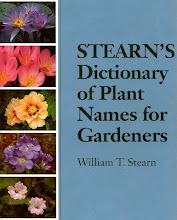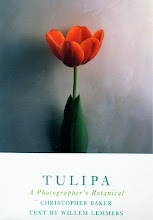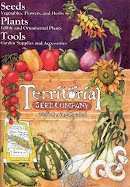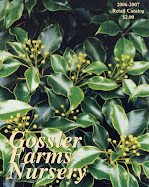Mixed borders (or mixed planting beds) are those that combine shrubs & perennials. They have outpaced perennial beds to become the most common type of planting in Seattle. There is good reason for this. Mixed borders are more visually appealing, more varied, more interesting & less work than perennial gardens. Cottage gardens usually refer to perennial beds, but the cottage garden style is frequently applied to mixed plantings. Perennials & shrubs are most often informally intermixed.
1 Find a sunny site. This technique can work in shade. But it is easier in sun.
2 Choose a theme. You might choose plants from a certain region. But it is probably easiest to work with color. You might decide to use a variety of different colors, a dominant single color, or a pair of contrasting colors. Don’t make it too complex. Try to take it easy.
3 Choose your favorite shrubs from lists of plants that match your theme. Shrubs will take up the most space. Decide where to place them 1st. Realize that they will cast shade as they grow. Learn their ultimate size in order to leave enough space between them for perennials. Consider repeating certain shrubs. Keep it simple.
4 Choose your favorite perennials from lists of plants that match your theme. Here you will be thinking more of flowers. But foliage is still important. Don’t use too many spiky-leaved perennials. This is easy to do. It looks boring. Think of grasses, bulbs & groundcovers as perennials. Be sure to repeat certain perennials. 1 of everything is just a big chaotic mess.
5 Buy lots of compost. You can order it by the truckload from Cedar Grove, or buy it in bags. Cover the garden site 2 feet deep. Plant in the compost.
6 Buy the plants. No single nursery will have all of the plants you want & need. Call around. Look in the phone book under Nurseries. Visit ALL of the nurseries near you. Order plants by mail, if they are unavailable locally.
7 Set the plants out on the compost. Shrubs should be near the center of the bed to give them room to spread. (This is particularly important if you are planting along a wall.) Place shorter perennials in front of shrubs & underneath them. Place taller perennials between shrubs. Place the tallest perennials at the back between shrubs, if you are planting along a wall. If you intend to walk around the planting bed, place the tallest perennials in the center between shrubs.
8 Move the plants while still in their pots. Shift them to allow the appropriate space between them. Be sure you know how big these plants will get. Buy a book which describes the growth habit & ultimate size of a variety of plants. The Sunset Western Garden Book is excellent for this purpose.
Design for a Mixed Border
ARM = Armeria maritima
AST = Aster
EUP = Euphorbia myrsinites
HEM = Hemerocallis
MAH = Mahonia aquifolium
NAR = Narcissus
PAE = Paeonia suffruticosa
ROS = Rosa glauca
STA = Stachys byzantina
THY = Thymus 'Pink Chintz'
































































